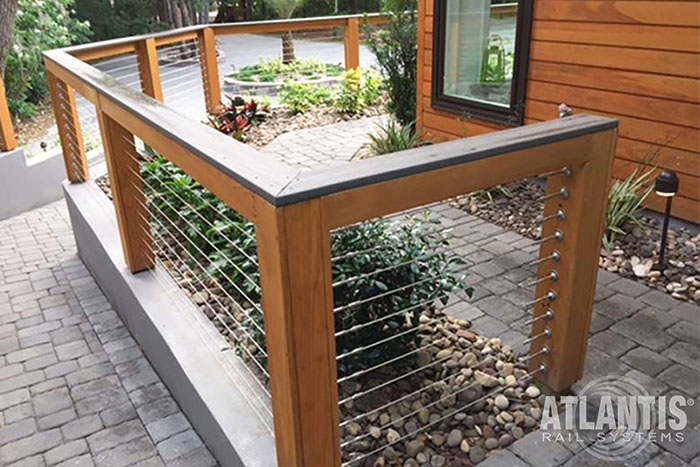The construction industry has developed massively over the years, especially with the advances in technology. Unlike years before, today, property owners enjoy numerous options to enhance the beauty and security of their residential or commercial buildings. It is for this reason that cable railing systems have become so popular in recent times. Let’s look at how to select the perfect cable railing setup.
The cable railing systems can be used both inside and outside a building or home. Cable railings can be installed on balconies, decks or stairs. You get to enjoy an unobstructed view while still having a safe and secure deck railing setup.
Now, there are many options for cable railing setups available. It may be confusing at first as to which cable railing system is best for particular areas of your property. Luckily, in this article, we offer insight on how to select your perfect cable railing setup.
Cable railing systems consist of metal wires that run horizontally from one rail post to another. The result is an open view with superior ventilation and an aesthetic look for your commercial or residential building. To choose the ideal cable railing setup for your building or home, you should do the following:

Identify the Right Posts
Every cable railing system requires posts. To know the kind of posts you need, consider the environment and weather in your area. For example, if you are near the ocean, you will want to use either wooden or 316L stainless steel posts. Analyze the quality and cost of your options, and go for what suits your budget and needs.
Consider the shape that suits the style of your building and the materials used in the building’s construction. For a traditional look, consider posts made of wood. If you want a more sleek or modern look choose aluminum or stainless steel. A touch of color will go a long way in complementing the surrounding décor and enhancing the look of your building. Check out the Atlantis Rail gallery for inspiration.
Consider Your Top Rail
Top rails are also known as cap rails. They are used for uniting the posts to form a complete frame. The kind of posts you choose in step one will also determine which top rail to use. Your preference also plays a big part in making the decision. If you are sticking with a sleek look, you might consider a polished or brushed stainless steel rail rather than a wood, aluminum, vinyl, or composite railing. Additionally, consider that the top rail will require pieces for the corners.

Cable Picking
Consider the kind of cable for the place you want to set up the railing system. Or, maybe you are thinking of a Glass Railing System instead. When considering which cable to use, remember that this forms the main component of the railing system. It helps transform any open frame into a safe and secure cable railing. When choosing your cable you want to consider the cable’s longevity and the material used in its construction.
Select Your Hardware
The hardware is used in securing the cables’ ends. They are also referred to as fittings or assemblies. Pick the hardware based on the type of cables you choose and the look you want. Ensure they are suitable for the environment of your building. You can also mix finishing options for a unique look.
Optional Railing Pieces
The railing system may require other things such as a gate or stairs. If you want your cable railing setup to include stairs, you will also need a handrail. For such optional additions, it is essential to consult a professional to ensure everything is installed to code.
Installation Tools and Products for Its Maintenance
After considering all the above factors and picking the ideal items, your railing system is ready to install. You will now require the tools to enable you to set it up and maintain it. Such tools include cable cutters, frame components, cable crimpers, and drill bit kits to help in various fittings. Additionally, you may need epoxy bonding for stainless steel components, frames, and cables. If your posts and top rails are wooden, include oil treatment that penetrates deep, and end grain sealant.
You will also need care items like cleaning and protection solutions to ensure your cable railing stays well maintained.
Conclusion
Selecting the perfect cable railing setup is not an easy decision. Fortunately, the above steps will help you choose your ideal cable railing system for your building. Once you have selected your ideal cable railing setup, contact us for a quote.